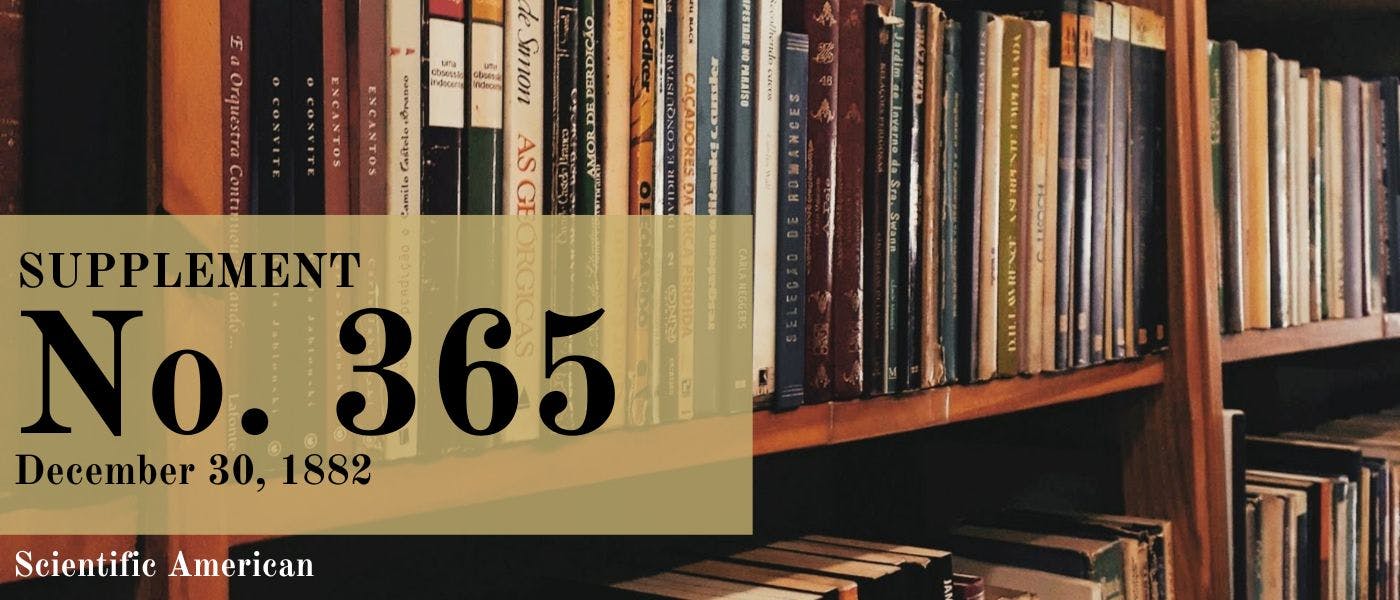Scientific American Supplement, No. 365, December 30, 1882 by Various, is part of the HackerNoon Books Series. You can jump to any chapter in this book here. SPECTRUM GRATINGS.
SPECTRUM GRATINGS.
At a recent meeting of the London Physical Society, Prof. Rowland, of Baltimore, exhibited a number of his new concave gratings for giving a diffraction spectrum. He explained the theory of their action. Gratings can be ruled on any surface, if the lines are at a proper distance apart and of the proper form. The best surface, however, is a cylindrical or spherical one. The gratings are solid slabs of polished speculum metal ruled with lines equidistant by a special machine of Prof. Rowland's invention. An account of this machine will be published shortly. The number of lines per inch varied in the specimens shown from 5,000 to 42,000, but higher numbers can be engraved by the cutting diamond. The author has designed an ingenious mechanical arrangement for keeping the photographic plates in focus. In this way photographs of great distinctness can be obtained. Prof. Rowland exhibited some 10 inches long, which showed the E line doubled, and the large B group very clearly. Lines are divided by this method which have never been divided before, and the work of photographing takes a mere fraction of the time formerly required. A photographic plate sensitive throughout its length is got by means of a mixture of eosene, iodized collodion, and bromized collodion. Prof. Rowland and Captain Abney, R.E., are at present engaged in preparing a new map of the whole spectrum with a focus of 18 feet.
In reply to Mr. Hilger, F.R.A.S., the author stated that if the metal is the true speculum metal used by Lord Rosse, it would stand the effects of climate, he thought; but if too much copper were put in, it might not.
In reply to Mr. Warren de la Rue, Prof. Rowland said that 42,000 was the largest number of lines he had yet required to engrave on the metal.
Prof. Guthrie read a letter from Captain Abney, pointing out that Prof. Rowland's plates gave clearer spectra than any others; they were free from "ghosts," caused by periodicity in the ruling, and the speculum metal had no particular absorption.
Prof. Dewar, F.R.S., observed that Prof. Liveing and he had been engaged for three years past in preparing a map of the ultra-violet spectrum, which would soon be published. He considered the concave gratings to make a new departure in the subject, and that they would have greatly facilitated the preparation of his map.
About HackerNoon Book Series: We bring you the most important technical, scientific, and insightful public domain books.
This book is part of the public domain. Various (2006). Scientific American Supplement, No. 365, December 30, 1882. Urbana, Illinois: Project Gutenberg. Retrieved https://www.gutenberg.org/cache/epub/18763/pg18763-images.html
This eBook is for the use of anyone anywhere at no cost and with almost no restrictions whatsoever. You may copy it, give it away or re-use it under the terms of the Project Gutenberg License included with this eBook or online at www.gutenberg.org, located at https://www.gutenberg.org/policy/license.html.

